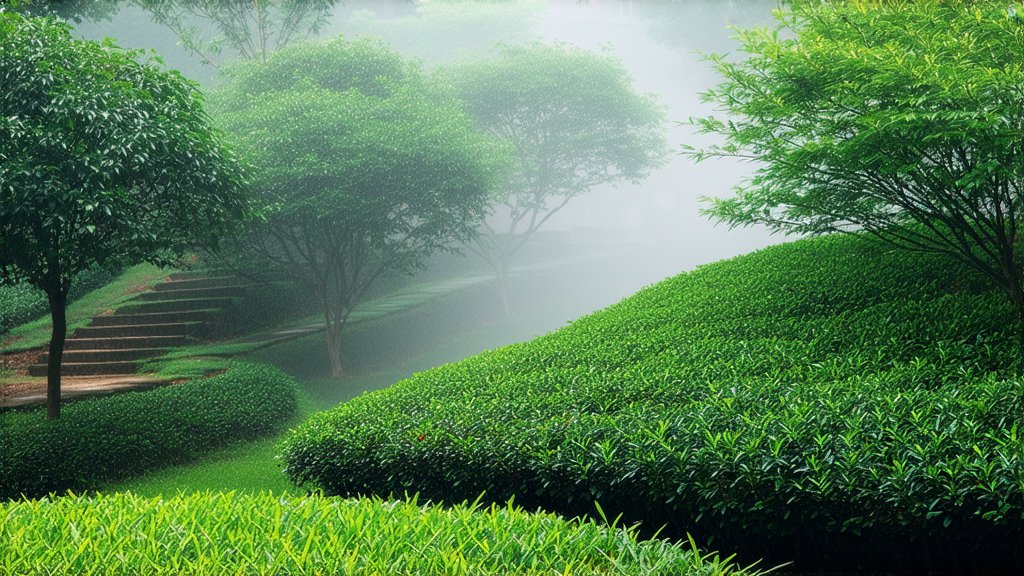
Dragon Well (Longjing) tea, often hailed as the "national drink" of China, is not merely a beverage; it is an embodiment of Chinese culture, history, and artistry. Among the vast array of Chinese green teas, Dragon Well stands out for its distinctive flavor profile, unique production method, and storied past. This article delves into the captivating world of Dragon Well tea, exploring its origins, varieties, intricate processing techniques, and the art of its appreciation.
A Historical Odyssey
The tale of Dragon Well tea begins in the Tang Dynasty (618-907 AD), but it wasn't until the Qing Dynasty (1644-1912) that it gained widespread recognition. Legend has it that the tea owes its name to Hu Gong, a poor scholar who lived during the reign of Emperor Kangxi. After failing his imperial examinations, he chose to become a monk at the Longjing Temple in the West Lake District of Hangzhou. There, he discovered a spring whose water was so pure that it could rejuvenate even the weariest traveler. Nearby, he cultivated tea plants, which flourished due to the pristine environment. The tea brewed with this spring water became known as "Dragon Well," symbolizing both the purity of the water and the excellence of the tea.
Varieties within the Dragon Well Family
While Dragon Well tea is traditionally associated with the West Lake region of Hangzhou, several sub-varieties have emerged over time, each with its own nuances. The most renowned among them are:
-
Meijiawu Longjing: Grown in the Meijiawu village, this variety is considered the epitome of Dragon Well quality. Its leaves are flat, smooth, and needle-like, with a vibrant green hue. The brewed tea offers a delicate balance of sweetness and umami, accompanied by a lingering chestnut aroma.
-
Xiongdi Longjing: Produced in Xihu District, these leaves are slightly more robust than their Meijiawu counterparts, reflecting the richer soils of the area. Xiongdi Longjing boasts a fuller body and a hint of roasted notes.
-
Yingshan Longjing: Sourced from the Yingshan region, this type is less common but equally intriguing. It features a more pronounced vegetal character with a subtle bitterness that gives way to a refreshing finish.
Each of these varieties showcases the diversity within Dragon Well tea, influenced by microclimates, soil compositions, and traditional cultivation practices.
The Alchemy of Production
The magic of Dragon Well tea lies not only in its origins but also in its meticulous manufacturing process. Unlike other green teas that might be steamed or oven-dried, Dragon Well undergoes a unique pan-frying technique, which imparts its signature flavor and appearance. Here’s a glimpse into this artisanal craft:
-
Plucking: Only the youngest shoots and leaves, typically the top two leaves and bud, are handpicked during the early spring when they are at their freshest and most nutrient-rich.
-
Fixation: Freshly picked leaves are quickly transferred to large woks heated to around 200°C (392°F). Skilled tea masters toss and stir the leaves constantly to halt oxidation while gently wilting them. This step is crucial for preserving the green color and fresh aroma.
-
Shaping: As the leaves begin to soften, they are pressed and shaped into their characteristic flat, sword-like form. This process requires precision and experience, as the goal is to create uniform leaves without crushing them.
-
Drying: The shaped leaves undergo further drying in lower-temperature woks to reduce moisture content, ensuring stability and prolonged shelf life. This stage also refines the flavor profile, enhancing the tea's natural sweetness and reducing any residual bitterness.
-
Sorting and Packaging: Finally, the dried leaves are sorted by size and quality before being packaged carefully to preserve freshness.
The Ritual of Appreciation
Drinking Dragon Well tea is an experience that transcends mere consumption; it becomes a meditative ritual celebrating the harmony between man, nature, and tea. Here’s how to fully appreciate this exquisite brew:
-
Warming the Utensils: Begin by rinsing your teapot and cups with hot water to warm them up and remove any impurities.
-
Infusion: Use approximately 3 grams of loose leaf tea per 150ml of water. Dragon Well tea prefers slightly cooler water temperatures, around 80-85°C (176-185°F), to preserve its delicate flavors.
-
Steeping: Steep the leaves for about 1-2 minutes. Oversteeping can lead to bitterness, so it's important to find the right balance.
-
Observation: Admire the bright yellow-green liquor and the dancing leaves as they unfurl gracefully in the cup.
-
Smelling: Inhale deeply to detect the subtle floral and chestnut aromas that characterize high-quality Dragon Well.
-
Tasting: Take small sips, allowing the tea to coat your palate fully. Notice the initial sweetness followed by a gentle umami aftertaste. Let each sip linger, savoring the complexity of flavors.
-
Multiple Infusions: Dragon Well tea can be steeped multiple times, with each infusion revealing different layers of flavor. Adjust steeping times slightly longer with each subsequent brew.
Conclusion
Dragon Well tea is more than just a beverage; it is a testament to China's rich tea heritage and a symbol of the country's dedication to the art of tea making. From its ancient origins to its modern-day popularity, Dragon Well continues to captivate tea enthusiasts worldwide with its unique flavor profile, meticulous craftsmanship, and profound cultural significance. Whether enjoyed in solitude or shared among friends, Dragon Well tea invites us all to pause, reflect, and savor the simple yet profound pleasures of life.